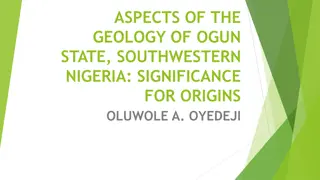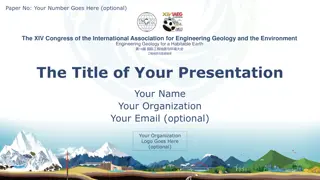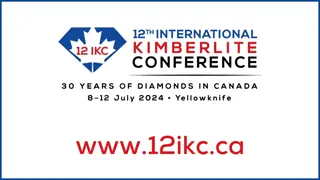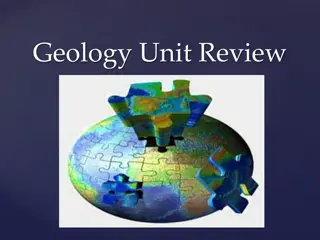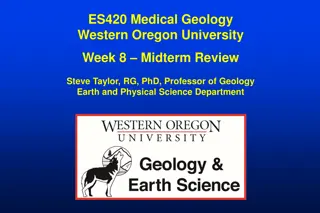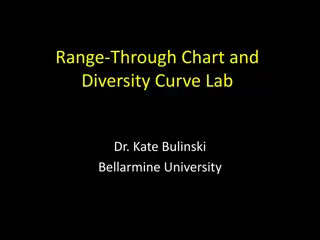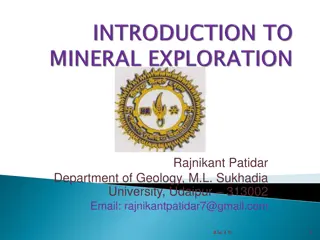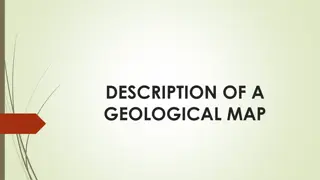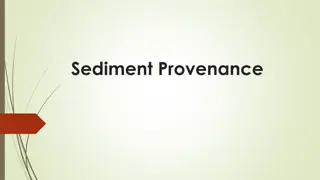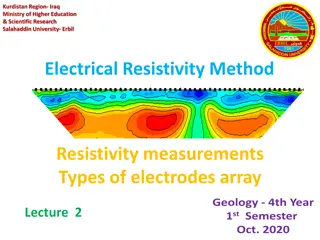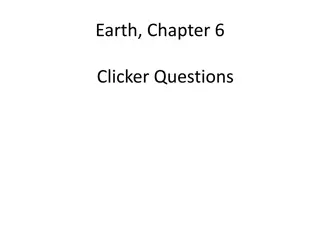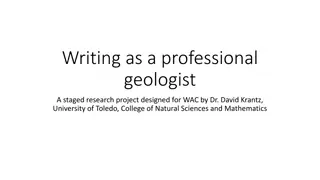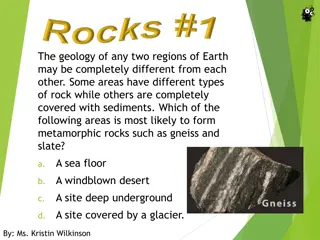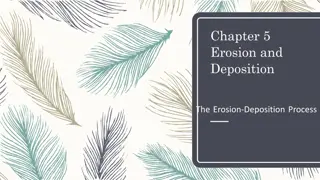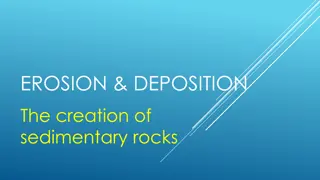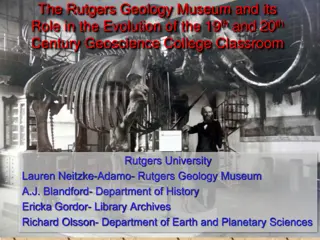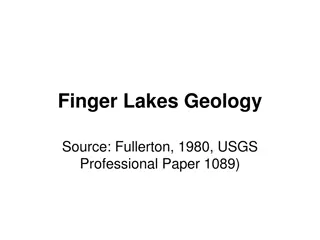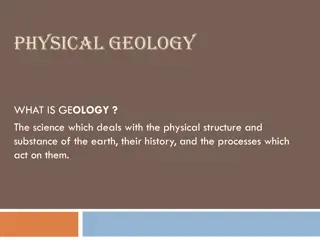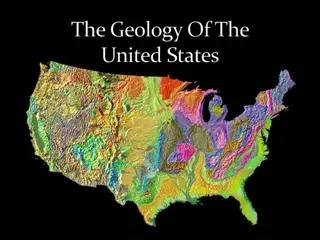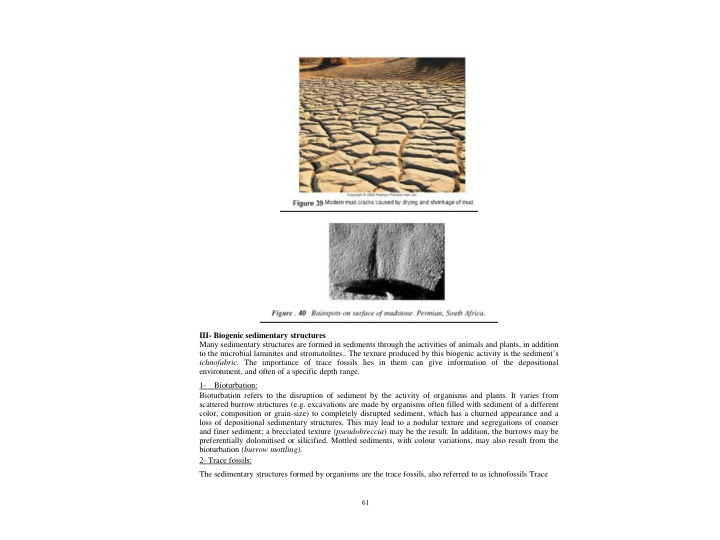
Biogenic Sedimentary Structures
Biogenic sedimentary structures are formed by the activities of organisms, plants, and microbes in sediments, leading to bioturbation and trace fossils. Bioturbation involves the disruption of sediment by organisms, resulting in varied textures and structures. Trace fossils provide valuable insights into depositional environments and behaviors of ancient organisms. Five main groups of trace fossils are feeding, dwelling, crawling, resting, and grazing structures, each offering clues about the organisms responsible. These structures play a crucial role in understanding past ecosystems and sedimentary processes.
Download Presentation

Please find below an Image/Link to download the presentation.
The content on the website is provided AS IS for your information and personal use only. It may not be sold, licensed, or shared on other websites without obtaining consent from the author. If you encounter any issues during the download, it is possible that the publisher has removed the file from their server.
You are allowed to download the files provided on this website for personal or commercial use, subject to the condition that they are used lawfully. All files are the property of their respective owners.
The content on the website is provided AS IS for your information and personal use only. It may not be sold, licensed, or shared on other websites without obtaining consent from the author.
E N D
Presentation Transcript
III- Biogenic sedimentary structures Many sedimentary structures are formed in sediments through the activities of animals and plants, in addition to the microbial laminites and stromatolites.. The texture produced by this biogenic activity is the sediment s ichnofabric. The importance of trace fossils lies in them can give information of the depositional environment, and often of a specific depth range. 1- Bioturbation: Bioturbation refers to the disruption of sediment by the activity of organisms and plants. It varies from scattered burrow structures (e.g. excavations are made by organisms often filled with sediment of a different color, composition or grain-size) to completely disrupted sediment, which has a churned appearance and a loss of depositional sedimentary structures. This may lead to a nodular texture and segregations of coarser and finer sediment; a brecciated texture (pseudobreccia) may be the result. In addition, the burrows may be preferentially dolomitised or silicified. Mottled sediments, with colour variations, may also result from the bioturbation (burrow mottling). 2- Trace fossils: The sedimentary structures formed by organisms are the trace fossils, also referred to as ichnofossils Trace 61
fossils vary from discrete, well-organized structures which can be attributed to a particular organism and/or activity. With many trace fossils it is not known which type of organism was responsible, but the behaviour of the animal can be deduced. Five principal groups of trace fossils are recognized: feeding structures, dwelling structures, crawling traces, resting traces and grazing traces. Some trace fossils are formed through a combination of activities. - Resting traces are made by animals sitting or rested during life on a sediment surface and leaving an impression of their body. Although quite rare, resting traces of starfish (e.g., Asteriacites) and bivalves (e.g., Pelecypodichnus) occur in shallowwater sediments. - Locomotion tracks or crawling are produced by animals on the move, and so are usually straight or sinuous trails on bedding surfaces. They can be produced by many typesof animal in almost any environment. Common crawling traces are made by crustaceans, trilobites (e.g., Cruziana) and annelids. Vertebrates such as reptiles (especially the dinosaurs), amphibians and mammals leave footprints as trace fossils. - Grazing traces occur on the sediment surface and are produced by deposit-feeding animals systematically working the sediment for food. These biogenic structures usually consist of well-organised, coiled, meandering and radiating patterns. Grazing traces tend to occur in relatively quiet depositional environments and are produced by such organisms as molluscs and crustaceans. Examples are Helminthoides and Nereites. - Feeding structures are trace fossils developed within the sediment by deposit-feeding organisms searching for food. The trace fossil typically consists of a network of filled burrows, branching (e.g., Chondrite) or unbranched (e.g., Zoophycos).. Chondrites and Zoophycos are feeding structures found in many Phanerozoic shelf sediments. - Dwelling structures are burrows varying from simple vertical tubes (e.g., Skolithos, common in intertidal zones) to U-shaped burrows, oriented either vertical (e.g., Diplocraterion), subvertical or horizontal (e.g., Rhizocorallium) to the bedding. Other burrows, particularly those burrow with pelleted walls, e.g. Ophiomarpha organised feeding burrow system, e.g. Chondrites simple straight tubes. e.g. Skofrthos branching, dwelling burrow, e.g. Tha /as sin ot des horizontal! feeding burrow system, e.g. Zoophycos vertica U-tube with spreite, e.g. Dp/ocratonon horizo nt al-su b horizo nta I U-tube with spreifte, e.g. Rbizocoratfium Figure 41 Sketches of comrtton dwelling tt n *1 fe eel iffy burrows. of crustaceans, are simple to irregularly branching systems, with walls composed of pellets or clay (e.g., Ophiomorpha and Thalassinoides, of intertidal-shallow subtidal environments). 62
- Borings are another type of trace fossil, although more common in limestones. They are distinguished from burrows by being made into a hard substrate, such as a hardground surface, reworked concretion or carbonate skeleton. Borings are common in hardground surface and are important evidence that the seafloor was cemented during deposition. -When burrowing organisms are rapidly buried, some can move up to regain their position relative to the sediment-water interface; in so doing they leave behind a characteristic escape structure which deflects adjacent laminae to give a chevron structure. - Use of trace fossils in sedimentary studies Biogenic sedimentary structures can give vital information for environmental interpretation, in terms of water depth, salinity, energy level, oxygenation, etc., and they are especially valuable where body fossils are absent. Trace fossils can give an indication of sedimentation rate. Intensely bioturbated horizons and beds with well- preserved, complex feeding and grazing traces would generally reflect slow rates of sedimentation; bored surfaces (hardgrounds) generally indicate a break in sedimentation (a hiatus or omission surface) allowing seafloor cementation to take place. Intense bioturbation may occur immediately below a flooding surface, where, for example, sandstones are sharply overlain by deeper-water mudrocks.U-shaped burrows with spreite and escape structures reflect more rapid sedimentation. Table fh Mum features of trace fossil groups. 1. Locomotion tracks: tracks, uncomplicated pattern: linear or sinuous, includes footprints 2. Grazing traits:more complicated surface trails, symmetrical or ordered pattern; coiled, radial, meandering, mostly made by detritus feeders 3.Resting traces: Impression of w here animal rested during life that not a fossil mould) 4. Dwelling bunows: simple to complex burrow systems but no suggestion of systematic working of sodimeat: burrows can be day-lined or pelleted; some made by suspension feeders 5.Feeding burrows:simple to complex burrow systems; often well-organised and defined branching pattern indicating systematic reworking of sediment by detritus feeders 6. Borings: mostly simple structures (tubular, flask-shaped), cutting hard substrates such as pebbles, fossils and harden muds 63
ey Skohthos ertical dwelling Carboniferous 43 simple bun retire Wales on 64
Figure 44 Zoophyeos. a feeding burrow system. Field of view 20 cm across. Carboniferous, N.E. England. Figure45' Eione, a burrow containing balls of sand, giving a beaded appearance, the result of the animal ingesting and excreting the sand (to remove the organic matter) as it burrowed through the sediment. Field of view 20 cm across. Carboniferous. N.E. England. 65
3- Stromatolites: are organo-sedimentary structures consisting of laminations which define a variety of growth forms. They develop through the trapping and binding of carbonate particles by a surficial mat mainly composed of blue-green algae. Stromatolites are very common in Pre-cambrian carbonate sequences but also occur in many of Phanerozoic age. Stromatolites vary from planar laminations, called cryptalgal laminites, often showing the effects of desiccation, to domes (like cabbages) and columns (cigar-shaped). Laminations consist of micrite, peloids and fine skeletal debris. With planar forms the cryptalgal origin of the laminae is shown by small corrugations and undulations; and preferential thickening over small surface irregularities. Elongate cavities are common in cryptalgal laminites.Oncolites are spherical to subspherical, unattached cryptalgal structures (algal balls), often with concentric laminations. The laminae may be asymmetric and discontinuous from growth on the top of the ball while it was stationary. These microbial structures or algal balls formed by calcified algae, which are mostly red (coralline) algae. laterally-linked hemispheroids (LLH) vertically-stacked hemispheroids (SH) microbial laminites. irregular, crinkly laminae, desiccated. with fenestrae niK.nlds symmetric or asymmetric growth Foil i microbial (stromatolmc) domal Figure , 46 columnar and planar stromatolites, and oncohtes structures: common IV- Post- depositional structures A variety of structures are formed after deposition, some through mass movement of sediment (slumping and sliding) and others through internal reorganisation by dewatering and loading. Post-depositional physico- chemical and chemical processes produce stylolites, dissolution seams and nodules. They are of different types, as minor faults, minor folds, inconvolute beds, and breccia. Such structures can be developed in all sediments of all grade - sizes, but more often in medium sand sizes, and silt sizes sediments. In this group are included slump folds, convolute bedding and lamination, load casts, sandstone dykes and dewatering structures 1-Slump structures: Once deposited, either upon or close to a slope, a mass of sediment can be transported downslope. Where there is little internal deformation of the sediment mass, more often the case with limestones, then the transported mass is referred to as a slide. Brecciation of the sediment mass can take place. Where a sediment mass is internally deformed during downslope movement, then the term slump is 66

